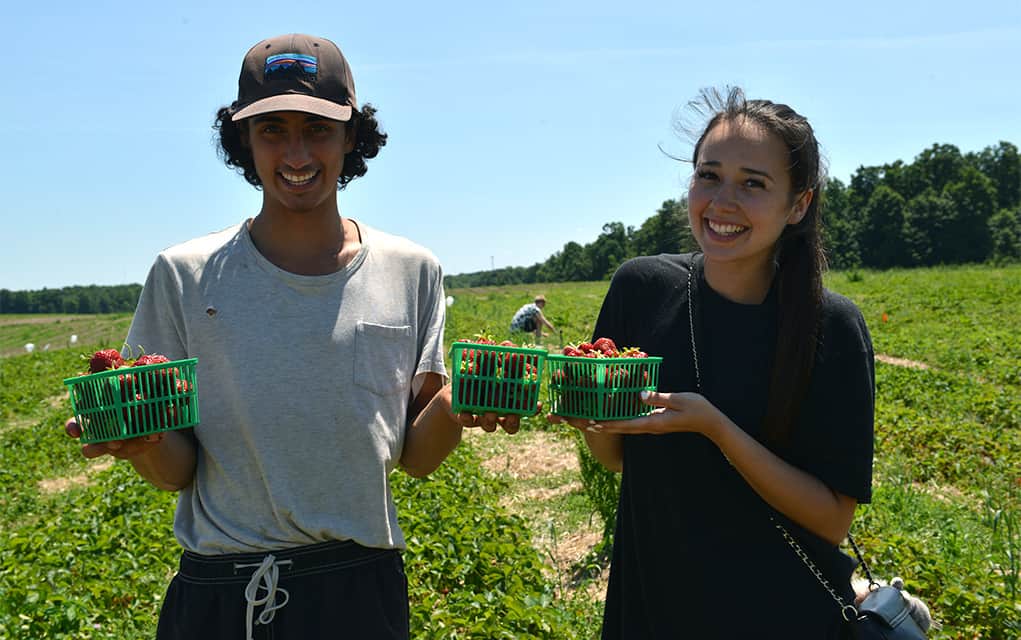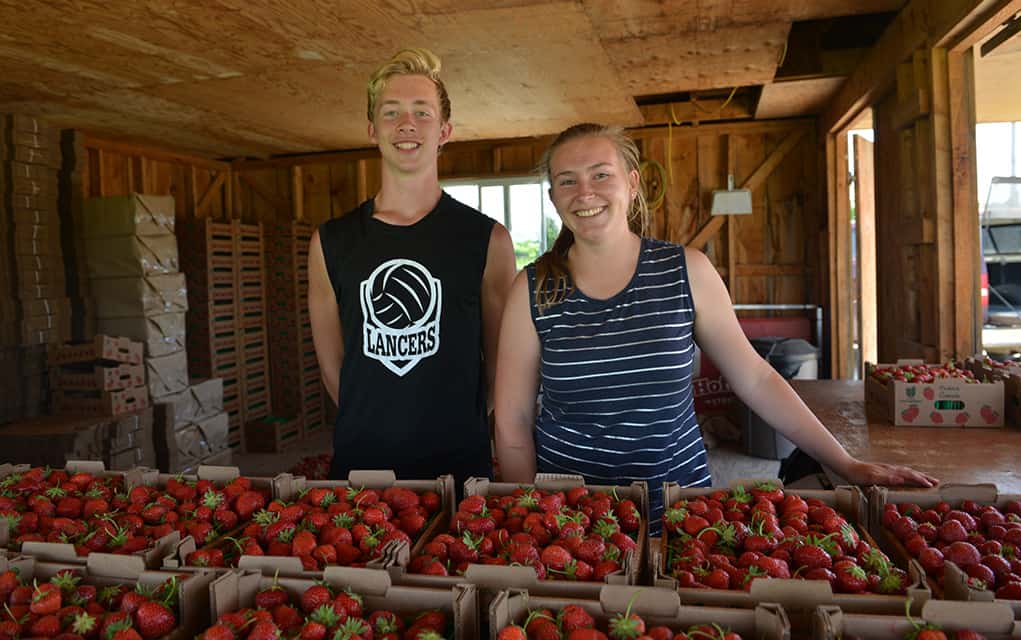With berry season in full swing, now is the time to attend those pick-your-own farms and kiosks available for prospective buyers around town. Martin’s Family Fruit Farm sells a variety of produce including garlic, beans, and strawberries. Bryan Martin works for the company and has been selling produce for 25 years.
“We just started with a table at the end of our driveway with strawberries,” explained Martin. “I work for a produce company, so I always had access to produce. So that’s how I started.”
While selling strawberries may seem like a straightforward farm-to-table enterprised on the surface, Ontario fruit crops specialist Erica Pate says there are a lot of pieces to the puzzle for its production.
“There are quite a few considerations before planting,” said Pate. “That could include site selection, soil preparation, cultivar selection, determining your labour supply and choosing a market. Strawberries can be grown in a lot of parts of Ontario. For other berry crops, different soils work better than others. So you want to be in the right soil. Water management’s a big issue, pest management.”
“We’re getting once a week rain,” added Martin. “But you need to be set up with irrigation, for sure, because there are times where you will need to irrigate.”
There are other factors to watch out for. Cyclamen mites are invisible to the naked eye, measuring only 0.02 cm at maturity and thrive in humid locations. While it is not the only pest to be wary of, it is expected to be one of the more challenging ones this season.
“The best way to avoid cyclamen mites is to avoid introducing them into your new fields,” said Pates. “They can move pretty easily from old fields that have cyclamen mites to new fields so, and they can travel on machinery, equipment, clothes, animals, and people. If growers can work in new, clean fields first before moving to older fields, that will reduce the likelihood of introducing them to new fields.”
If growers find themselves in a tricky situation where their berries are damaged, it all comes down to determining what the issue is.
“It could be a nutrient issue, a pest management issue, or a production issue,” said Pate. “So if growers need help with that, they can contact me, or there are fruit consultant in different areas. So if there’s a consultant in their area, they can hire a consultant to help them out. On our website, we have a tool that can help them diagnose the problem. So they can go through the different symptoms they see on their plants, and it can at least help point them in the right direction.”
There are more than a hundred varieties of strawberries.
“It’s interesting, as people are out picking they can probably taste the difference from one variety to another,” said Pate. “Some of the popular ones include Valley Sunset, Jewel, Annapolis, Wendy, and Albion.”
Anyone interested in learning more information can visit the Berry Bulletin at www.onfruit.wordpress.com









